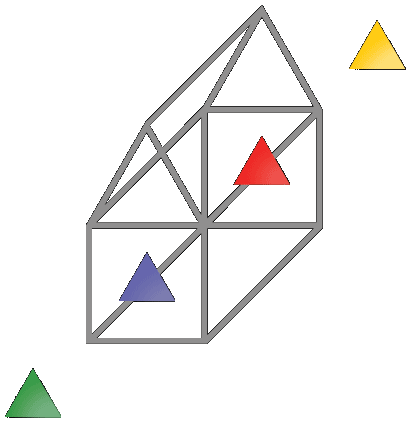Stained Glass Window. . . A straightforward term . . . Seems to pretty much say it all, right? Well, not quite. At least not to me.
Implicit in the term stained glass window is the transformative and elusive wonder of light, which itself implies an expansive, three-dimensional experience. In its purest, most pristine form, light is a perfect metaphor for discovery and understanding. Both symbolically and physically, light leads from darkness to new possibilities.
When one expands the definition of window to include its interaction with light, vivid three-dimensional images soon tickle the mind’s eye. Suddenly, landscape and sky become dynamic extensions of a window’s flat picture-plane. The serendipitous and unexpected projections of light and color into an architectural space complete the concept of stained glass window as a fully three- (or more) dimensional experience that is constantly changing with the passing of hours, days, and seasons.
As stained glass evolved as a medium, the crystal clarity found in its earliest use in Romanesque and Gothic cathedrals was soon obscured by painting onto the glass. Increasingly, stained glass windows’ potential for crystalline views out with transcendent sunshine pouring in became blurred by surface treatment. Painting on glass can produce beautiful, glowing, . . . well. . . paintings. However, early in my career, I realized that my intuitive and subliminal attraction to stained glass is glass’s pristine transparency. Unlike painting on canvas, which is seen via flat, reflected light, unadulterated stained glass transmits light through the picture-plane from the other side.
The conceptual starting point in my work is carefully planned, often abstract imagery. Just as important, however, is the sunlight that streams through my windows, weaving its way into our consciousness as we gaze back out to landscape and sky beyond.

